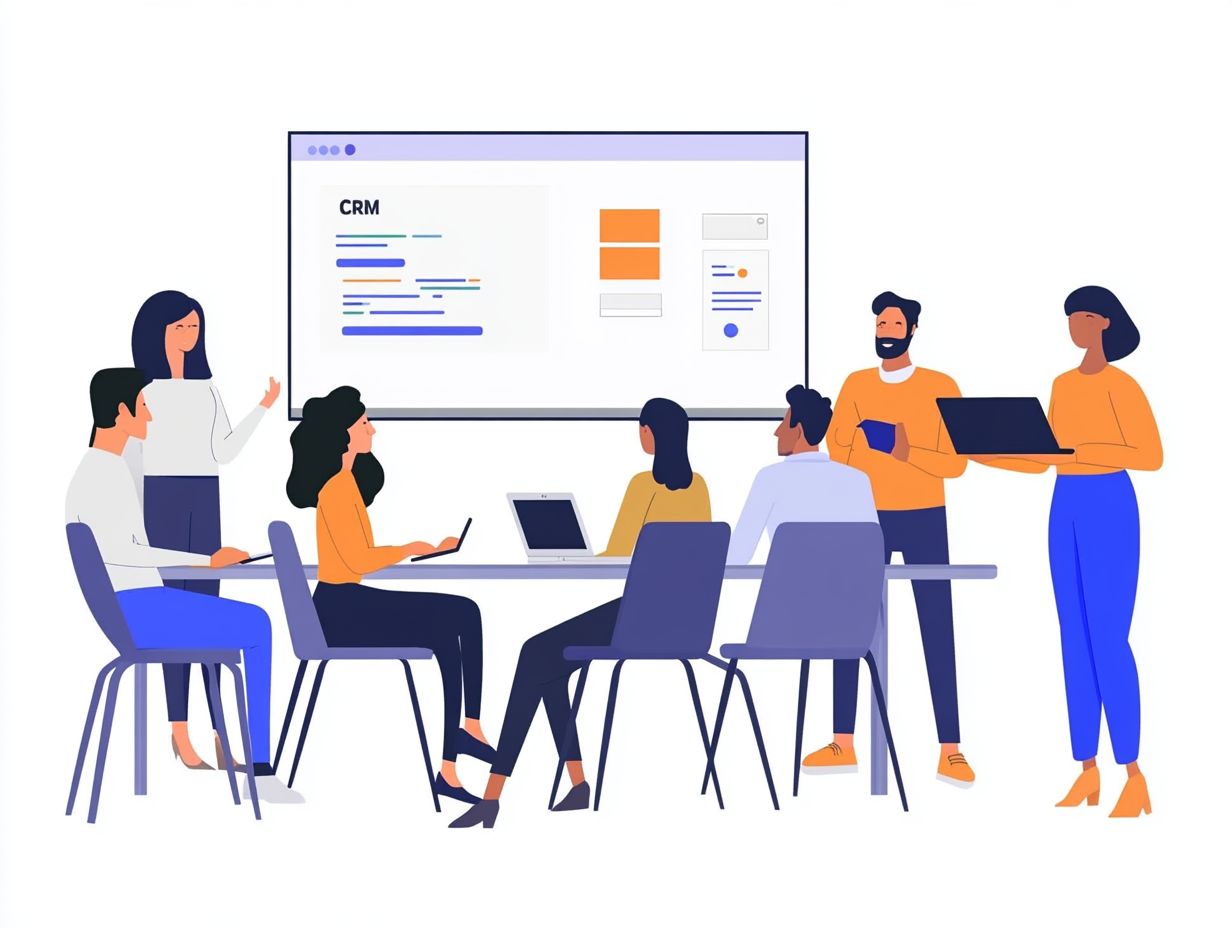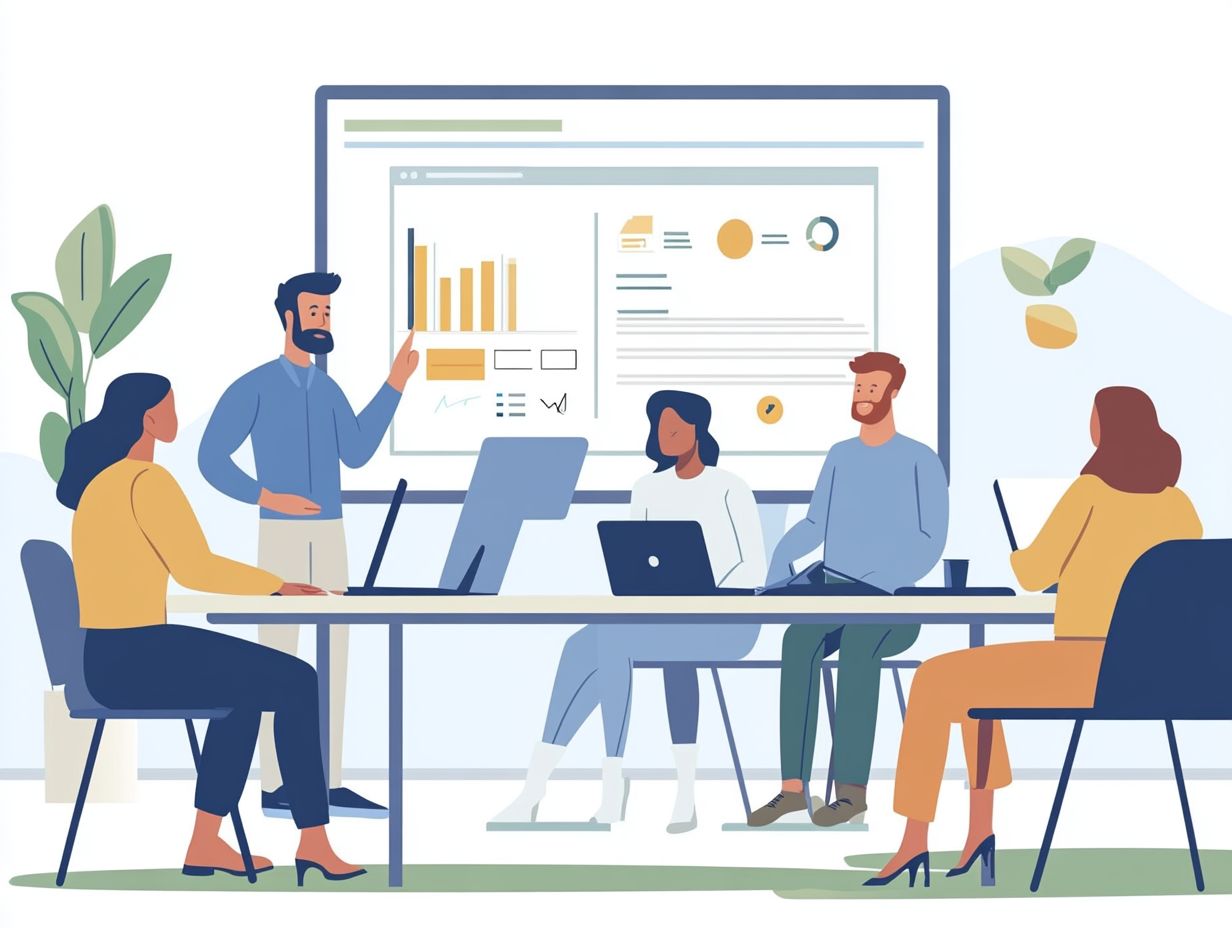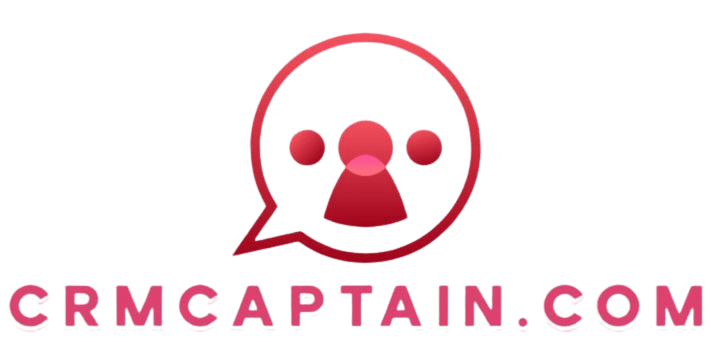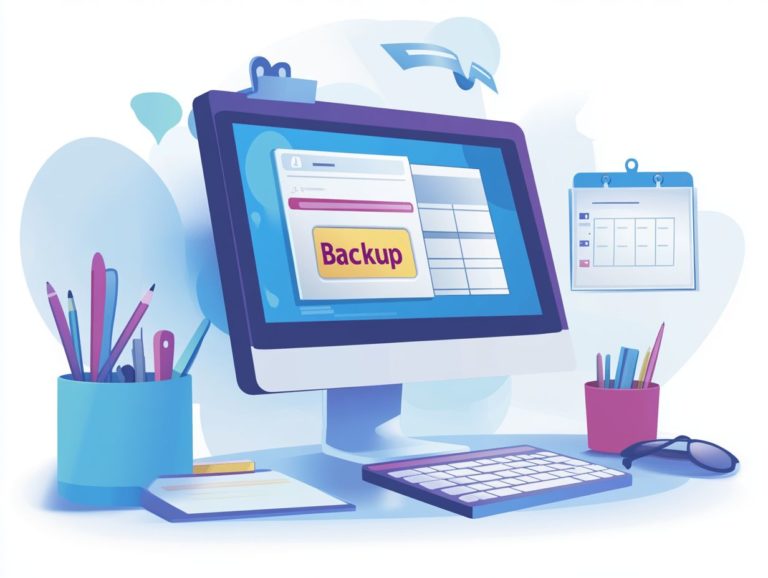Tips for Successful User Training in CRM
Effective user training is essential for unlocking the full potential of your Customer Relationship Management (CRM) system.
This article delves into key elements of successful training. It guides you from understanding user needs to crafting custom training plans that resonate.
We will address common challenges organizations face and offer best practices to ensure your training efforts yield optimal results.
It’s important to evaluate training outcomes for ongoing improvement. By prioritizing user training, you can greatly improve user adoption and foster stronger customer relationships.
Contents
Key Takeaways:

Understanding user needs is the foundation for successful CRM training. It ensures training is relevant and addresses specific pain points.
Using a variety of training methods, such as hands-on workshops and online courses, increases engagement and retention among users.
Continuously evaluating and improving user training is crucial for long-term success. Regularly assess training results and make adjustments to meet evolving user needs.
Why User Training is Important in CRM
User training is essential for maximizing the potential of CRM systems. It significantly influences user adoption and the overall effectiveness of managing customer relationships.
Implementing custom training programs that cater to your end-users can bridge skill gaps. This enhances their proficiency in using CRM features, elevating customer service and boosting sales.
For example, platforms like monday.com offer intuitive training modules. These resources empower users to navigate task management and project tracking with ease.
Such training programs help employees become familiar with system functionalities. They also cultivate a collaborative work environment, ensuring everyone is aligned.
Organizations investing in user training see amazing results. Enhanced proficiency leads to better data management and more meaningful customer interactions, which is critical for businesses striving to excel today.
Key Elements of Successful User Training
Successful user training in CRM involves several essential elements. You need a structured training environment, clearly defined expectations, and custom modules that address the unique needs of various roles.
Incorporating interactive training methods cultivates an atmosphere of ongoing learning. This ensures users remain motivated and supported throughout their CRM journey.
Understanding User Needs

Understanding your users’ needs is essential for creating an effective CRM training program. This helps bridge knowledge gaps and align with their expectations.
Conducting a thorough needs assessment allows you to pinpoint specific areas requiring support. This ultimately enhances engagement and creates a more productive training experience.
Start by gathering qualitative and quantitative data through surveys, interviews, and focus groups. Encourage users to share insights about the current training approach.
Collecting feedback is crucial for ongoing improvement. It enables trainers to refine their methods to better meet users’ evolving needs.
Tackling identified knowledge gaps boosts user confidence in their skills. It leads to deeper engagement with the training content and sparks a vibrant culture of learning.
Creating an Effective Training Plan
Creating an effective training plan requires a strategic approach. You need clear training objectives, diverse formats, and complete course content that fits your team s needs.
Use measurable metrics to evaluate your training investment. Adjust as needed to optimize learning outcomes.
The first step in developing this strategy involves setting specific, achievable objectives that align with your overall business goals. Next, selecting appropriate training formats be it workshops, online courses, or hands-on mentoring can cater to different learning styles and preferences.
For instance, incorporating interactive e-learning modules can captivate users effectively.
Regular assessments, like pre- and post-training surveys, are essential to evaluate performance metrics. Successful organizations often blend these methods, combining group sessions with independent projects to reinforce learning and foster collaboration, ensuring that users not only acquire knowledge but can also apply it in real-world scenarios.
Utilizing Different Training Methods
Using different training methods is crucial. It engages various learning styles and helps retain information.
Hands-on practice and online resources enhance your learning experience and improve your adoption of Customer Relationship Management (CRM) systems. These diverse approaches create an environment where you can experiment and ask questions, making the learning process significantly more engaging.
By incorporating real-time feedback mechanisms, organizations can continuously adjust their training strategies to meet your evolving needs. You can leverage online platforms for ongoing education, allowing for a seamless integration of new skills into your daily routines.
This combination of interactive formats and accessible resources gives you the power to take charge of your learning journey, cultivating a more proficient and confident approach to your work.
Common Challenges in CRM User Training

Common challenges in CRM user training can hinder your onboarding process. Technical complexities and low user motivation are significant obstacles.
Organizations must tackle these issues directly, ensuring that training sessions are not only successful but also foster long-term user engagement.
Identifying and Addressing Obstacles
Spotting and addressing obstacles is key to a positive user experience and nurturing ongoing support throughout the training journey.
By regularly collecting training feedback, you can pinpoint areas of concern that require attention, allowing you to implement necessary adjustments. This keeps users engaged and excited about learning as they navigate the complexities of the CRM system.
To effectively gather this feedback, consider utilizing surveys, one-on-one interviews, and group discussions. This approach gives users a chance to express their concerns and suggestions openly.
Actively listening to their experiences not only helps identify training gaps but also fosters a sense of involvement and ownership. Continuous support is equally important; having a dedicated team on standby to answer questions and troubleshoot issues can significantly alleviate user frustration.
By refining training programs based on this feedback, you cultivate a culture of continuous improvement, ultimately enhancing user competence and satisfaction with the CRM system.
Best Practices for CRM User Training
Using best practices in CRM training boosts your sessions and user adoption rates.
Prioritize ongoing learning and feedback to create a collaborative training environment that encourages engagement and gives you the power to master your CRM systems with confidence.
Tips for Maximizing Training Effectiveness

To maximize your training initiatives, consider using game-like features to make training fun, interactive modules, and well-designed materials that cater to various learning styles. These approaches enhance engagement and promote better retention of your CRM system’s features.
Incorporating elements like point systems, leaderboards, and rewards for achieving training milestones cultivates a competitive yet supportive environment among your teams.
Use real-life scenarios and simulations to provide learners the chance to practice and apply their skills in a realistic context. This significantly boosts their confidence and capability.
Offer different formats like videos, infographics, and live discussions to keep everyone engaged! This diverse approach also addresses different learning preferences and nurtures a more inclusive training atmosphere.
Evaluating and Improving User Training
Evaluating and enhancing user training is a dynamic process. Assess results against established performance metrics while conducting ongoing evaluations to pinpoint areas for improvement.
Actively gather user feedback and analyze training outcomes to continuously refine your programs and deliver the essential support needed for user proficiency.
Assessing Training Results and Making Adjustments
Assessing training results is crucial for identifying successes and areas for improvement. This process allows you to make necessary adjustments that enhance the training environment and user experience.
Performance metrics and training feedback are invaluable in this evaluation. They enable you to adapt your strategies to meet the evolving needs of your users.
To measure these outcomes effectively, consider employing various performance metrics, such as:
- Completion rates
- Knowledge retention scores
- Practical application assessments
Gather user feedback through surveys or focus groups to gain insights into the strengths and weaknesses of your training program. If participants struggle with specific content areas, adjust by incorporating more hands-on practice or supplementary materials.
Implementing these changes boosts user engagement and ensures that future training sessions align better with learners needs and expectations ultimately driving superior results.
Frequently Asked Questions
What are some tips for successful user training in CRM?
1. Start with a thorough explanation of the CRM system and its features.
2. Provide hands-on training with real-life scenarios to help users understand the system better.
3. Encourage users to ask questions and create a safe space for them to learn and make mistakes.
4. Offer a variety of training methods such as online tutorials, live demonstrations, and interactive workshops.
5. Create training materials that are easy to understand and reference, like user manuals or video tutorials.
6. Regularly follow up with users to provide additional support and address any questions or concerns they may have.
Need more help? Contact us today!






